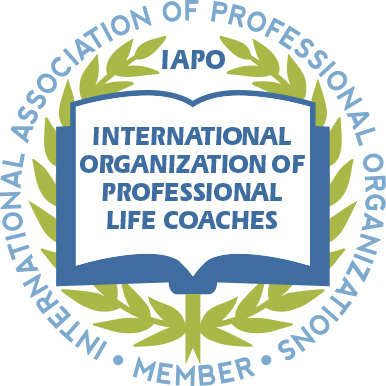Codependent relationships can be complex and challenging to navigate. They can also be detrimental to our personal growth and development. If you believe you may be trapped in a cycle of unhealthy dependency, it’s important to do the work required to regain your sense of self and to heal a codependent relationship.
Today, we share a two-phase codependency recovery plan.
- Phase 1 includes questions and thought prompts that may help you reflect on potential codependency in your relationships.
- Phase 2 provides practical strategies that may help you break the codependency cycle and heal a codependent relationship.
How to Heal Codependent Relationships
Codependency Recovery Phase 1: Self-Awareness and Reflection
Phase 1 includes learning more about the nature of codependency and reflecting on thought prompts.
The prompts are intended to help you identify codependent behaviors and also better understand the drivers of those behaviors.
It’s best to write down your responses so you can remind yourself of developmental opportunities and journal most effectively about your progress.
Step 1: Understanding Codependency
Codependent relationships involve one person excessively relying on another’s approval and validation for a sense of self-worth.
This dependency leads to enabling behaviors, lack of personal boundaries, and emotional turmoil.
Codependent behavior may also include difficulty expressing emotions, excessive caretaking, and fear of abandonment.
Understanding the symptoms of codependency can help you identify areas of your own behavior that may be contributing to the dynamic.
Step 2: Reflect on Your Relationships
Reflect on how you tend to interact with others in your relationships. Include both past and present prior romantic relationships, friendships, even relationships with siblings and parents.
As part of this exercise, consider the following questions:
- Are you often the one doing all the giving and receiving very little?
- Do you set healthy boundaries in your relationships?
- Analyze how you respond to different stimuli in these relationships, and how you communicate your emotions, needs, and reactions.
Step 3: Identify Codependent Behaviors
The next step is to focus on identifying codependent behaviors in your relationships.
The following list includes examples of codependent behavior patterns.
As you continue to reflect on your relationships, identify any codependent behaviors that you tend to exhibit.
- Do you often have difficulty saying “no” or setting boundaries?
- Do you tend to avoid conflict by denying or minimizing your feelings?
- When others act out or express negative emotions, do you feel responsible for their behavior or feelings?
- Do you value the opinions of others more than your own?
- Do you often seek (or crave) approval from others?
- When conflict arises, do you rescue or caretake others’ emotions or problems?
- Do you tolerate abusive or disrespectful behavior from others?
- Do you have low self-esteem and self-worth?
- When you take time for self-care, do you feel guilty?
- Do you lack personal interests or goals?
- Is it difficult for you to identify or express your emotions?
- Do you feel responsible for the happiness of others?
- Do you fear being alone or abandoned?
For more information and resources, read: 12 Signs of a Codependent Relationship
Step 4: Look for Patterns and Drivers of Codependent Behavior
As you reflect on behaviors noted above, consider how they may impact your relationships with others.
Also consider how these behaviors may affect your own well-being and how they may contribute to a cycle of codependent behavior.
Ask yourself:
- Why do I engage in these behaviors?
- What am I afraid of?
- Do these behaviors make me feel good about myself?
- What triggers these behaviors?
Reflect further on your own emotions, needs, and desires.
Continue to nurture your own self-awareness to better understand the root causes of your codependent behaviors.
Acknowledging codependency in relationships is a critical step towards healing.
Codependency Recovery Phase 2: Strategies to Heal Codependent Relationships
Phase 2 of codependency recovery includes potential strategies that may help create healthier dynamics in your relationships.
Strategy 1: Set Boundaries
Setting boundaries is key to breaking the cycle of co-dependency and also essential to any healthy relationship. Consider this approach:
Identify areas where you may need to set boundaries.
Clearly communicate your needs, expectations, and limits to your partner. Be assertive and learn to say “no” when necessary.
Always focus on what you control. Setting boundaries is not about controlling others’ behavior but about taking responsibility for your own.
Strategy 2: Practice Self-Care to Heal Codependent Relationships
Self-care is essential to breaking the cycle of codependency.
Consider activities that bring you joy, relaxation, and rejuvenation.
Engage in regular self-care practices, such as exercise, meditation, or spending time in nature.
Nurture your physical, emotional, and mental well-being.
This will help you build a stronger sense of self and reduce dependency on external validation.
Taking care of yourself is important to breaking patterns of codependent behavior.
Strategy 3: Build a Support System to Heal Codependent Relationships
Surround yourself with a supportive network of friends or family members.
Seek out relationships that promote mutual growth, respect, and healthy interdependence.
It’s important to have people in your life who validate and encourage your individuality.
Support groups can also be a wonderful source of both accountability and encouragement.
Look for potential community resources or ask your health care provider for recommendations.
Strategy 4: Seek Professional Help
Breaking patterns of codependent behavior is challenging.
If you’re struggling to break free from codependency, consider seeking professional help.
A therapist or counselor can provide guidance, support, and tools tailored to your specific situation.
They can help you explore deeper issues and develop healthy coping mechanisms.
How to Heal Codependent Relationships
Codependency is a complex pattern of behavior, and self-awareness and reflection are essential to breaking the cycle.
Use the codependency thought prompts provided to identify potential areas of codependency in your relationships and explore the strategies recommended to regain your sense of self.
Change takes time and effort, but with the right mindset and action, you can break the cycle of codependency and cultivate healthy, fulfilling relationships.
To learn more about drivers of codependency, please read: Common Causes of Codependent Relationships.
Thank you as always for reading.
If you haven’t yet subscribed, please visit KindCompassCoach and enter your email address so you never miss a post.
As Amazon Associates, we may receive a small commission (at no cost to you) for items purchased through links in this post.

Joan Senio is the founder of KindCompassCoach. Joan’s career includes clinical healthcare plus 20+ years as an executive in a nationwide health care system and 15 years as a consultant. The common threads throughout Joan’s personal and professional life are a commitment to non-profit organizations, mental health, compassionate coaching, professional development and servant leadership. Joan has had the privilege of mentoring early and mid-career professionals as well as current and future executives and leaders. She is a member of the International Organization of Life Coaches, serves as a thought-leader for KuelLife.com and is also a regular contributor to PsychReg and Sixty and Me. You can read more about Joan here: Joan Senio.





2 Responses
This was really interesting to read about, thank you for sharing it. I am sure that those experiencing this will find it really useful and take a lot of encouragement and key steps to take. Very informative!
Thank you so for reading and sharing your thoughts, Molly. It means so much to hear from readers like you. Please keep your feedback coming!